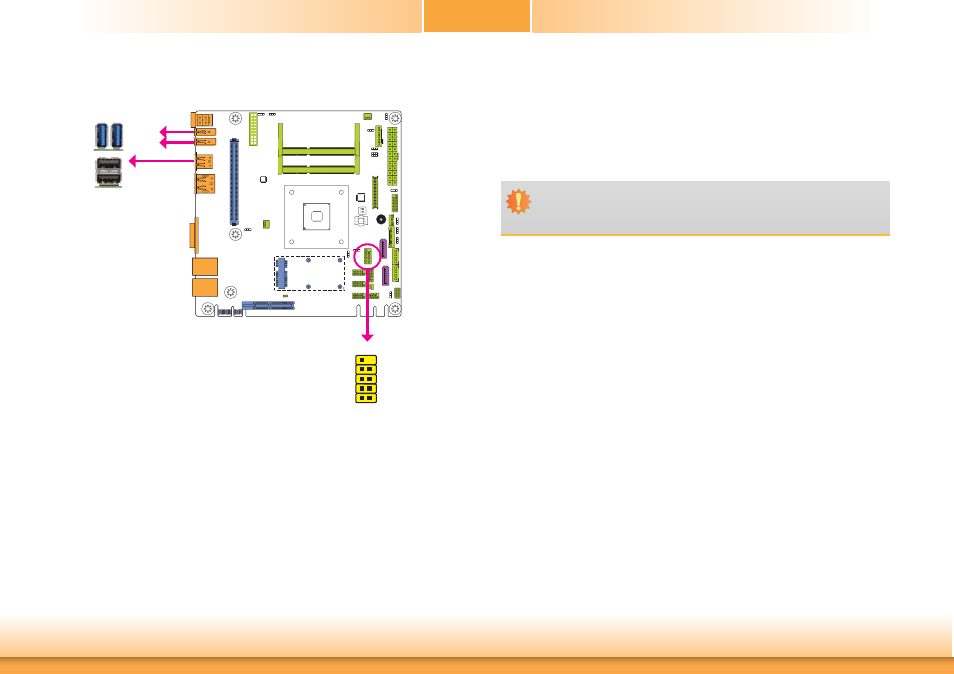Chapter 2 – DFI KB160 User Manual
Page 20

www.dfi .com
20
Chapter 2 Hardware Installation
Chapter 2
USB Ports
These USB devices allow data exchange between your computer and a wide range of simulta-
neously accessible external Plug and Play peripherals.
The system board is equipped with two onboard USB 3.0 ports (USB 0-1) and two onboard
USB 2.0 ports (USB 0-1). The 10-pin connector allows you to connect 2 additional USB 2.0
ports (USB 2-3). The additional USB port may be mounted on a card-edge bracket. Install the
card-edge bracket to an available slot at the rear of the system chassis and then insert the
USB port cables to a connector.
BIOS Setting
Configure the onboard USB in the Advanced menu (“USB Configuration” submenu) of the
BIOS. Refer to chapter 3 for more information.
Driver Installation
You may need to install the proper drivers in your operating system to use the USB device.
Refer to your operating system’s manual or documentation for more information.
USB 1
USB 0
USB 2.0
10
VCC
-Data
+Data
GND
Key
VCC
-Data
+Data
GND
N. C.
9
1
2
USB 2.0
USB 3.0
USB 2-3
Important:
If you are using the Wake-On-USB Keyboard/Mouse function for 2 USB ports, the
+5V_standby power source of your power supply must support ≥1.5A. For 3 or more
USB ports, the +5V_standby power source of your power supply must support ≥2A.
Wake-On-USB Keyboard/Mouse
The Wake-On-USB Keyboard/Mouse function allows you to use a USB keyboard or USB mouse
to wake up a system from the S3 (STR - Suspend To RAM) state. To use this function:
• Jumper
Setting
JP11, JP12 and JP13 must be set to “2-3 On: +5V_standby”. Refer to “USB Power Select” in
this chapter for more information.
USB 0
USB 1
